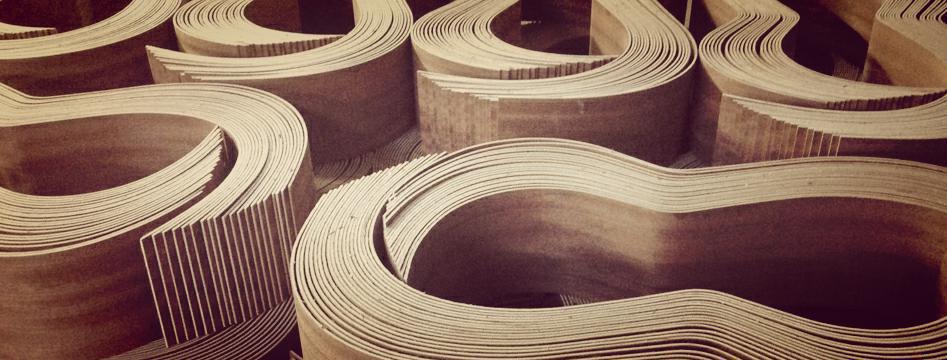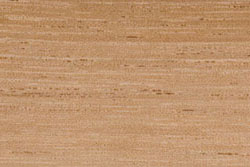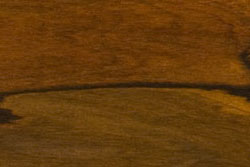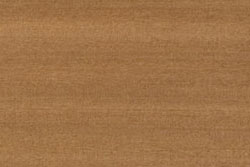In the world of guitars and other musical instruments, its know the term Tonewood as those woods for musical instruments chosen for its acoustic qualities. The type of wood or tonewood used in stringed instruments like classical guitars, flamenco guitars, acoustic guitars, violins, etc, directly influences the sound you want. Choosing the right tone wood will determine the final features and tone that the luthier wants to achieve.
We have made a selection of the most used woods for guitars. These woods are used for guitar tops, guitar back and sides, guitar necks, fingerboards and for the ornamentation and marquetry work on acoustic guitars. They come from all over the world from places like Canada, USA, Mexico, Guatemala, Nicaragua, Brazil, Germany, Spain, Romania, Nigeria, Cameroon, Gabon, Mozambique, Tanzania, Madagascar, India and Indonesia among others.
Most of the woods used by spanish guitar manufacturers are select woods that have being maturating and drying slowly. That is one of the main, almost invisible difference between a real spanish guitar and their imitations.
Wood used for guitar soundboard
European Spruce (picea abies)
ORIGIN: Germany, Rumania
DESCRIPTION: White colour. Density 450 Kg / m3
RECOMMENDATIONS: Good quality tops.
USE: Stringed instrument sound board, like guitar, violin and cello.
Engelmann Spruce (picea engelmannii)
ORIGIN: Canada
DESCRIPTION: White colour. Density 350 – 410 Kg / m3
RECOMMENDATIONS: Can stain easily, don’t store in humid place.
USE: Stringed instrument sound board.
Sitka Spruce (picea sitchensis)
ORIGIN: Canada
DESCRIPTION: Off white. Density 400 – 450 Kg/m3
RECOMMENDATIONS: Good size logs.
USE: Stringed instrument sound board, especially acoustic guitar.
Western Red Cedar (thuja plicata)
ORIGIN: Canada
DESCRIPTION: Orange / red colour. Density 350 – 400 Kg/m3
RECOMMENDATIONS: Nice sounding wood. Very stable.
USE: Guitar top
Yellow Cedar (Cupressus nootkatensis)
ORIGIN: Canada
DESCRIPTION: Yellow colour. Density 450 – 600 Kg/m3
USE: Top, back and sides
Wood used for guitar body, guitar neck, fingerboard and other parts
Maple (acer pseudoplatanus)
ORIGIN: Germany, Rumania
DESCRIPTION: White colour. Density 610 – 680 Kg/m3
RECOMMENDATIONS: Specially valued for its curl and other patterns like bird’s eye, quilt and spalt.
USE: Guitar backs & sides
Bloodwood (Pterocarpus Erinaceus)
ORIGIN: Brasil
DESCRIPTION: A bright, vivid red. Colour can darken to a darker brownish red over time with exposure to light and air. Density 1.195 Kg/m3.
USE: Guitar Back and sides
Bubinga (guibourtia spp)
ORIGIN: Gabon
DESCRIPTION: Red colour. Density 700 – 900 Kg/m3
RECOMMENDATIONS: Can come in different grain patterns
USE: Guitar backs & sides
Mahogany (swietenia macrophylla)
ORIGIN: Brazil
DESCRIPTION: Brown to reddish colour. Density 490 – 530 Kg/m3
RECOMMENDATIONS: Protected specie, under appendix II of CITES
USE: Acoustic guitar neck, back and sides
Yellow Cedar (Cupressus nootkatensis)
ORIGIN: Canada
DESCRIPTION: Yellow colour. Density 450 – 600 Kg/m3
USE: Top, back and sides
Honduras Cedar (cedrela odorata)
ORIGIN: Brazil
DESCRIPTION: Light Brown colour. Density 450 – 600 Kg/m3
RECOMMENDATIONS: Protected specie, under appendix III of CITES
USE: Classical guitar neck
Cypress (cupressus sempervirens)
ORIGIN: Spain
DESCRIPTION: White / Light yellow colour. Density 400 – 600 Kg/m3
RECOMMENDATIONS: Great response
USE: Flamenco guitar backs & sides
Cocobolo (dalbergia retusa)
ORIGIN: Mexico
DESCRIPTION: Red colour with dark grain. Density 990 – 1250 K
RECOMMENDATIONS: Considered as one of the substitutes to Brazilian Rosewood The oil it contains can cause problems when gluing
USE: Guitar backs & sides
Nicaraguan Cocobolo (dalbergia retusa)
ORIGIN: Nicaragua
DESCRIPTION: Red / orange colour, black grains. Density 900 – 1200 Kg/m3
RECOMMENDATIONS: Similar to Mexican Cocobolo, but can present wilder grain patterns
USE: Guitar backs & sides
Ebony (diospyros ebenum)
ORIGIN: Cameroon, Nigeria
DESCRIPTION: Black colour. Density 1000 – 1275 Kg/m3
RECOMMENDATIONS: Considered the #1 fingerboard material because of its smooth feeling, durability and aesthetics. Can crack easily when atmospheric conditions change
USE: Stringed instrument fingerboard, Guitar bridge and head plate
Madagascar Ebony (diospyros ebenum)
ORIGIN: Madagascar
DESCRIPTION: Black colour. Density 1050 – 1280 Kg/m3
RECOMMENDATIONS: More stable than African ebony, turns better and doesn’t crack so easy.
USE: Stringed instrument fingerboard Guitar bridge and head plate
Koa (acacia koa)
ORIGIN: Haway
DESCRIPTION: Different tones of brown. Density 720 Kg/m3
RECOMMENDATIONS: Specially valued when curly
USE: Guitar backs & sides, Ukulele body
Ovangkol (guibourtia ehie)
ORIGIN: Gabon
DESCRIPTION: Different tones of green with marked grain. Density 725 – 820 Kg/m3
RECOMMENDATIONS: Similar to Rosewood but half the price
USE: Guitar backs & sides
Black Walnut (juglans nigra)
ORIGIN: USA
DESCRIPTION: Dark brown. Density 550 – 660 Kg/m3
RECOMMENDATIONS: Affordable wood with good acoustics
USE: Guitar backs & sides
European Walnut (juglans regia)
ORIGIN: Spain
DESCRIPTION: Different tones of brown. Density 700 – 780 Kg/m3
RECOMMENDATIONS: Used very much in the past for classic guitar making
USE: Guitar backs & sides
Palo Escrito (dalbergia palo-escrito)
ORIGIN: Mexico
DESCRIPTION: Red grain. Density 620 Kg/m3
RECOMMENDATIONS: Nice looking and attractive price
USE: Guitar backs & sides
Padouk – Polo Rojo (pterocarpus tinctorius)
ORIGIN: Gabon
DESCRIPTION: Bright red. Density 825 Kg/m3
RECOMMENDATIONS: Very stable
USE: Guitar backs & sides
Amazon Rosewood (dalbergia spruceana)
ORIGIN: Brasil
DESCRIPTION: Dark brown colour. Density 1100 Kg/m3
RECOMMENDATIONS: Great look and acoustic qualities
USE: Guitar backs & sides

Honduras Rosewood (dalbergia stevensonii)
ORIGIN: Guatemala
DESCRIPTION: Light brown colour. Density 1070 Kg/m3
RECOMMENDATIONS: Looks good and even better sound
USE: Guitar backs & sides
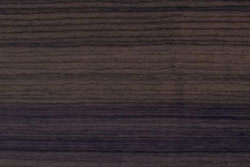
Indian Rosewood (dalbergia latifolia)
ORIGIN: India
DESCRIPTION: Range of colours that go from light brown to dark mauve. Density 870 – 900 Kg/m3
RECOMMENDATIONS: Extensively Used because of its great characteristics
USE: Guitar backs & sides, fingerboards, head plates and bridges.
Madagascar Rosewood (dalbergia baronii)
ORIGIN: Madagascar
DESCRIPTION: Light to dark brown colour. Density 920 Kg/m3
RECOMMENDATIONS: Most similar wood to Brazilian Rosewood in looks. Presents spider webbing and dark grain.
USE: Guitar backs & sides
Kingwood (dalbergia cearensis)
ORIGIN: Brazil
DESCRIPTION: Violet grain. Density 1020 Kg/m3
RECOMMENDATIONS: Nice sounding and looking wood
USE: Guitar fingerboard
Santos Rosewood – Pau Ferro (caesalpinia ferrea)
ORIGIN: Brazil
DESCRIPTION: Various tones of brown. Density 940 Kg/m3
RECOMMENDATIONS: Low price but good looking. Can produce allergies
USE: Guitar backs & sides, fingerboard, bridge and head plate.
African Mahogany – Samanguila (khaya ivorensis)
ORIGIN: Cameroon
DESCRIPTION: Light brown colour. Density 420 Kg/m3
RECOMMENDATIONS: Very similar to genuine mahogany
USE: Guitar neck, backs & sides
Sapele – Sapelly (entandrophragma cylindricum)
ORIGIN: Gabon
DESCRIPTION: Brown colour. Density 560 Kg/m3
RECOMMENDATIONS: Good substitute to genuine Mahogany
USE: Guitar backs & sides
Sycamore – Sicomoro (acer pseudoplatanus)
ORIGIN: Germany
DESCRIPTION: White colour. Density 620 Kg/m3
RECOMMENDATIONS: Like Maple without the curl
USE: Guitar binding, backs & sides
Sonokeling (dalbergia latifolia)
ORIGIN: Indonesia
DESCRIPTION: Range of colours that go from light brown to dark mauve. Density 820 Kg/m3
RECOMMENDATIONS: Like wide grain Indian Rosewood
USE: Guitar backs & sides, fingerboards, head plates and bridges.
Zebrano (microberlinia brazzavillensis)
ORIGIN: Gabon
DESCRIPTION: Light colour with dark grain. Density 550 Kg/m3
RECOMMENDATIONS: Interesting aesthetics
USE: Guitar backs & sides
Ziricote (cordia dodecandra)
ORIGIN: Mexico
DESCRIPTION: Green colour with dark grain.
RECOMMENDATIONS: Very nice looking, cracks easily though.
USE: Guitar backs & sides
We have taken most of this information from Maderas Barber. One of the biggest suppliers of tone wood for the majority of the spanish guitar makers and other fine guitar makers around the world.

